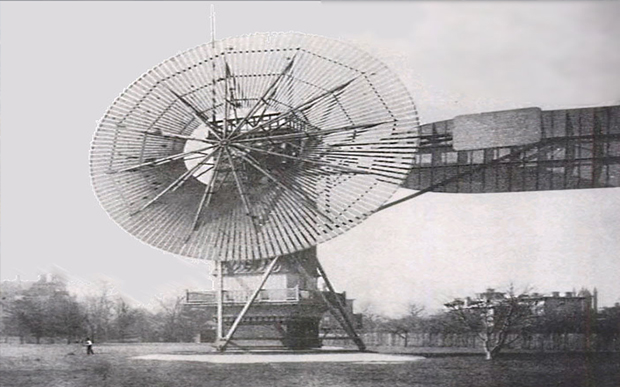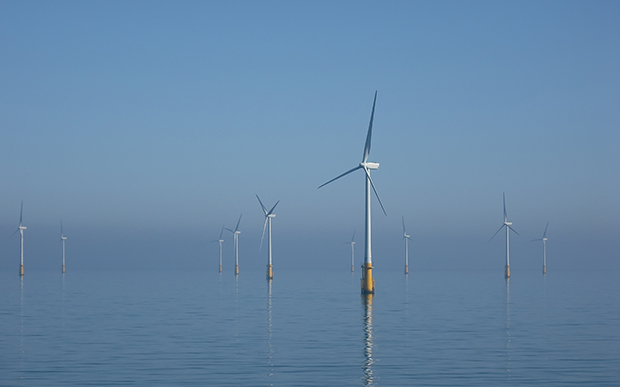Wind energy is a type of solar energy. In other terms it is referred to as wind power. Wind energy involves a process in which wind is used to generate energy. The irregularities of earth, its rotation and the unequal heating of the atmosphere by the sun cause the occurrence of winds. How the wind flows (wind patterns) are modified by different factors such as water bodies, earth’s terrain or vegetative cover. It can then be harvested by wind turbines and turned into electricity which can be used. Wind turbines are used in the conversion of kinetic energy that is present in the wind, after which it becomes mechanical energy. Then a generator converts the mechanical energy into electricity.
The History of Wind Energy
Wind energy has been used for a number of years by people. In the early years of 5,000 BC, people used to propel their boats along Nile River using wind energy. In Persia and Middle East, they used wind energy through windmills to grind grain. In China, there were wind-powered water pumps that were used in those early years. This is a clear indication that wind energy has a long history and it has only got better.
Within years, new techniques of using wind energy had spread around the world. During the 11th century, wind pumps were used largely in the Middle East for food production.

Since back then a lot of trade was happening, merchants and crusaders brought wind technology to Europe. The Dutch then acquired the skill and developed big wind pumps that were used to drain marshes and lakes in Rhine River Delta. Wind energy technology was then spread to the western side of earth by immigrants from Europe.
There were different functions of wind energy, for example, colonists used windmills to pump water, grind grain, and to cut wood at sawmills. As ranchers and homesteaders settled in the Western United States, they installed many wind pumps. By 1800s and early 1900s, people were widely using small wind-electric generators (wind turbines).
In the 1930s, power lines were built to transmit electricity and that is when wind pumps and turbines’ use began to decline but some ranches still use wind energy to supply their livestock with water. However, in the recent years, people have realised the importance of wind energy and small wind turbines have started becoming popular and this is to mainly generate electricity in rural or remote regions.

Wind Energy Resources
In many parts of the world, wind energy is very abundant. The wind resources are usually characterised according to the wind power density classed ranging from the lowest, class 1 to the highest class 7. The best wind resources are class 3 and above, have an annual wind speed of not less than 13 miles per hour. These types of wind resources are found in many parts of the world. When it comes to wind resources, wind speed is very critical and this is because the energy present in the wind is directly proportional to the cube of the speed of wind. In short the stronger the wind, the more the power that can be harnessed.
The Different Types of Wind Energy (turbines)
Wind turbines are an alternate source of energy and they harness this renewable energy and convert it into electricity. They run solely on wind meaning they are pollution-free. The wind turns blades which are usually connected to a generator and it is this generator that makes electricity. There are two main types of wind turbines: the horizontal and vertical axis. They are applicable for urban setting too. All these wind turbines have different designs and advantages.
1. The horizontal axis
These are the most common types of wind turbines. All its components are on the top of a tall tower. The blades face into the wind and its shaft is horizontal to the ground. The blades get hit by wind causing a rotation. The shaft usually has a gear on its end that turns the generator. The work of the generator is to keep producing electricity and send it to the power grid.
Inside the head (nacelle), there is an anemometer, a controller and a wind vane that are used to read the direction and speed of wind. When wind changes direction, a yaw motor moves the nacelle so that the blades face into the wind. It also has a safety feature, which slows the speed of the shaft in case there are extreme winds. This is to prevent damage to the turbine.
2. Vertical Axis
In this type of turbine, the shaft and the blade are connected vertical to the ground. The main components of the turbine are close to the ground including the wind turbine itself. There are two main types of vertical axis turbines: drag based and wind based. Normally, the lift based designs are more efficient that the drag designs. However, they are less efficient.
3. Ducted Wind Turbines
These turbines are positioned at the edge of a building’s roof and they use airflow along the building’s side. Air flows in an upward direction, hugging the wall of the building and then it enters the front side of the duct. The turbine’s blade diameter is 600m and its devices are usually small leaving a small visual impact. The disadvantage of this type of turbine is that is dependent on unidirectional current flow of wind.
Environmental Effects of Wind Energy
Advantages
Environmental friendly source of energy-it does not pollute air like other sources of energy such as power plants. There is no production of atmospheric emissions that are responsible for acidic rain. They do not affect the air we breathe in any way.
Natural renewable source of energy-winds occur due to heating of the atmosphere, rotation of earth and irregularities in earth’s surface so as long as there is sunshine, wind energy can always be harnessed. It never runs out and it does not deplete any natural resource.
Disadvantages
Causes noise and aesthetic pollution-the turbines produce a lot of noise and visual pollution. The best step to reduce this is to have wind turbines installed away from people’s dwellings. Some people also see wind turbines as a blot on the natural landscape.
A threat to the wildlife- this is because in very many occasions, birds get killed by flying into the turbines which have spinning blades. They also pose threat to some man-made structures like radio towers and cell phone masts. Some of these problems have been resolves and reduced in a way via technological advancement.

